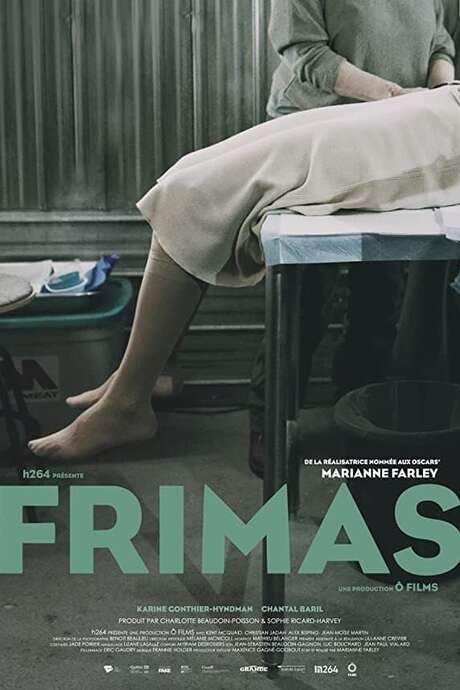
Rain Without Thunder
Year: 1992
Runtime: 85 mins
Language: English
Director: Gary O. Bennett
This evocative faux documentary envisions a near‑future America where the state surveils every woman’s sexual activity. Central to the film is Allison Golding (Ali Thomas), condemned to life imprisonment for undergoing an abortion. Through interviews with politicians, journalists and other influential voices, the piece traces the policies and cultural shifts that paved the way for this all‑encompassing authoritarian regime.
Warning: spoilers below!
Haven’t seen Rain Without Thunder yet? This summary contains major spoilers. Bookmark the page, watch the movie, and come back for the full breakdown. If you're ready, scroll on and relive the story!
Rain Without Thunder (1992) – Full Plot Summary & Ending Explained
Read the complete plot breakdown of Rain Without Thunder (1992), including all key story events, major twists, and the ending explained in detail. Discover what really happened—and what it all means.
Allison Goldring, Ali Thomas, a privileged white college student, discovers she is pregnant by her boyfriend Jeremy Tanner, Steve Zahn. After discussing her options with Tanner and her family, she decides to travel abroad to terminate the pregnancy, since abortion is prosecuted as “fetal murder” in the United States. Both Allison and her mother Beverly Goldring, Betty Buckley, say that everyone—including Tanner—backed her decision, though Tanner’s later denial feels dubious within the film’s portrayal of the events. Allison’s father and grandmother are interviewed and express support for both Allison and Beverly, with her father noting that he initially meant to go along but implying that prosecuting Beverly has become a more powerful, almost arbitrary, focal point of control in their circle.
As the narrative unfolds, we get broader background on their society: civil liberties are gradually trimmed in the name of fighting what officials call “hypercrime.” In the early twenty-first century, warrants become looser and several states push laws that criminalize abortion. At first, the penalties target abortionists, while many feminists remain complacent and underestimate how quickly the situation could worsen. The Church’s acceptance of barrier contraception weakens feminist momentum, and a wave of anti-abortion legislation follows, culminating in a constitutional amendment that defines personhood at conception. Laws that directly target women seeking abortions begin to take effect, and feminism itself becomes politically out of favor and subject to revisionism.
In New York, a sweeping change classifies traveling abroad for a termination as “fetal kidnapping.” Beverly acknowledges the shift but believes enforcement will take time, and it’s unclear how aware Allison and Jeremy are of the new legal terrain. The law emerges in response to a lawsuit challenging fetal-murder statutes that have been disproportionately applied to poor minority women. Interviews with women at Walker Point reveal how a system that interviews and prosecutes such cases can become entangled with race, class, and access to healthcare. One woman describes using a dangerous abortifacient called a “baby bomb,” while another, initially jailed for a termination, is convicted for using an IUD, illustrating how the law casts a wide net. The details of their experiences are chilling and lay the groundwork for debates about medical safety, state power, and how the law enforces morality.
African American district attorney Andrea Murdoch prosecutes the Goldrings under the new statute, a move that is clearly aimed at addressing broader concerns about biased enforcement, though it also raises questions about the ethics and method of pursuing such cases. Iona Morris brings depth to Murdoch’s portrayal, suggesting a prosecutorial impulse shaped by a desire for accountability—and perhaps ambition—within a justice system that has long struggled with disparities. Jonathan Garson, the Goldrings’ attorney, Jeff Daniels questions Murdoch’s motives but does not challenge the legitimacy of the fetal-murder framework itself, highlighting a clinical tension between legal principle and moral interpretation.
During the trial, Allison takes the stand and makes a striking confession. She does not show remorse in the moment, and she repeats that she felt relief in finally voicing her decision. This admission unsettles Beverly and Garson, who fear the consequences for both of them, since Allison’s testimony could seal their fate. The proceedings reveal that patient–doctor confidentiality and the safety nets of the old system have eroded under the new regime, where political ends can override personal privacy and trust.
After the trial, a medical review from a Swedish clinic determines that the fetus had been dead for nearly three weeks before the procedure. The Goldrings are ultimately released, yet Murdoch stays the course, declaring her intention to pursue charges for attempted fetal kidnapping on the grounds that the trio intended to commit the crime even if the act itself never occurred. The ending underscores a troubling shift: justice is now as much about signaling political stances and enforcing a new social order as it is about the truth of individual cases. The film’s final mood lingers on the uneasy balance between protection of autonomy and the chilling expansion of state power, leaving viewers to weigh questions about equality, legality, and what it means to navigate rights in a country redefining personhood and morality at every turn.
Last Updated: October 09, 2025 at 09:23
Unlock the Full Story of Rain Without Thunder
Don't stop at just watching — explore Rain Without Thunder in full detail. From the complete plot summary and scene-by-scene timeline to character breakdowns, thematic analysis, and a deep dive into the ending — every page helps you truly understand what Rain Without Thunder is all about. Plus, discover what's next after the movie.
Rain Without Thunder Timeline
Track the full timeline of Rain Without Thunder with every major event arranged chronologically. Perfect for decoding non-linear storytelling, flashbacks, or parallel narratives with a clear scene-by-scene breakdown.

Similar Movies to Rain Without Thunder
Discover movies like Rain Without Thunder that share similar genres, themes, and storytelling elements. Whether you’re drawn to the atmosphere, character arcs, or plot structure, these curated recommendations will help you explore more films you’ll love.
Explore More About Movie Rain Without Thunder
Rain Without Thunder (1992) Scene-by-Scene Movie Timeline
Rain Without Thunder (1992) Movie Characters, Themes & Settings
Rain Without Thunder (1992) Spoiler-Free Summary & Key Flow
Movies Like Rain Without Thunder – Similar Titles You’ll Enjoy
Future Weather (2013) Ending Explained & Film Insights
Land of the Blind (2006) Spoiler-Packed Plot Recap
Heavy Rain (2010) Detailed Story Recap
Rape Card (2018) Spoiler-Packed Plot Recap
Violence in a Women’s Prison (1982) Plot Summary & Ending Explained
Women’s Reformatory (1986) Story Summary & Characters
Frimas (2021) Ending Explained & Film Insights
It’s Raining Women (2022) Story Summary & Characters
Rape (1969) Film Overview & Timeline
A Scream from Silence (1979) Plot Summary & Ending Explained
Women’s Prison (1955) Full Movie Breakdown
Waiting for the Rain (1978) Ending Explained & Film Insights
Film About a Woman Who… (1974) Full Summary & Key Details
The Rain People (1969) Film Overview & Timeline
Women’s Things (1978) Ending Explained & Film Insights

















